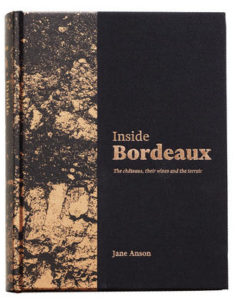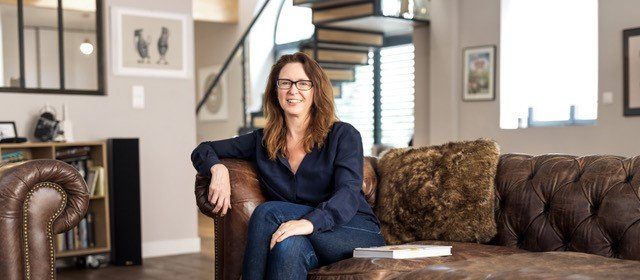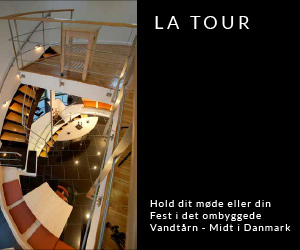Bordeaux remains immovable in terms of first place among the world’s most classic and prestigious wine districts. That is why countless wine books have been written about the region. Indeed, so many that the subject should be totally flattened and exhausted once and for all. Nevertheless, the very knowledgeable Jane Anson has managed to write a new, voluminous Bordeaux Bible that is not only incredibly thorough and accurate, but also contains plenty of new and exciting material. An indispensable reference work for the serious wine enthusiast has seen the light of day.
Who is Jane Anson?
Jane Anson has not so far attracted the same attention in the wine world as Jancis Robinson or Hugh Johnson, but that is about to change. Jane Anson has been living in Bordeaux, and writing about wine, since 2003, and in addition to quite a decent stream of books, she also excels by teaching at Bordeaux’s ‘École du Vin’.
Behind the masterpiece ‘Inside Bordeaux’ must be years of research, as she has personally visited up to 800 of the châteaux to ensure up-to-date and accurate knowledge of each one. After reading the book, there is no doubt that there is real substance behind Decanter’s assessment of Jane Anson, in which she is described as ‘the world’s most informed and accomplished expert on the wines of Bordeaux’.
 What’s in the book?
What’s in the book?
Jane Anson is gifted with paramount talents for a non-fiction writer: She is unbelievably thorough and methodical in her research, and she is an excellent communicator who writes easily, comprehensibly and with scientific precision. At the same time, she has a unique ability to structure the book’s very comprehensive material logically and thoughtfully. The book begins with a 90-page general section on Bordeaux, where even seasoned Bordeaux enthusiasts like me can learn a lot. The material is completely up-to-date, which provides a more than useful topicality, as quite a few other Bordeaux sources lean more on the past than on the present – let alone the future. In the current book, we go through all aspects of the general Bordeaux lesson, where the topics are treated more than comprehensively. These include Bordeaux’s history all the way up to the Chinese of today, vineyard work, the art of blending wine, the area’s business economy, the classifications and a professionally competent review of Bordeaux’s various terroirs – including geology, soil structure and human influence. If one absorbs this whole comprehensive introductory section, one is well equipped to better understand Bordeaux’s versatility and complexity.
At the back of the book, there is further help to be found in the form of a series of useful appendices – including a schematic classification overview: both the current and the historical one. There is also a useful glossary and a qualitative review of all vintages since 1855 and up to and including 2019, a wine history timeline, good advice on getting the best out of the wine by the glass and of course a solid index. Château by château, the encyclopedia section with the producer overviews is wisely divided according to the individual appellations with the most famous areas first. However, we get all the way around – also to the lesser-known districts on the Right Bank, such as Ste-Foy, Blaye and Bourg. The discussion of each district begins with a brief but comprehensive general description, where Jane Anson serves all the basic facts, such as area, production, terroir types, appellation rules, the local distribution of grape varieties, trends in the area’s ecological ambitions and not least a select few up-and-coming châteaux, to which it will no doubt be a good idea to pay attention. There is a detailed review of, as I said, around 800 châteaux, and Jane Anson is to be commended for even the lesser-known properties receiving the same serious treatment as the world stars. You are first introduced to the hard facts such as the vineyard area, classification and a reference to the relevant maps, which are most often newly created. The property’s wines and their typical blend are reviewed, so you can get a better idea of where the second and third wines have a potential.
Ownership, winemaker and consultant receive special focus, which is really important in Bordeaux, where the people can easily play a bigger role than the land. Finally, Jane Anson has also made her private version of the 1855 classification, so here one can read her judgment of the châteaux’ real Cru ranking, which is undoubtedly significantly more current than the historical one. Then, the château’s history and its current status, and what characterises the wines, and the vineyard and cellar work are described, plus an interesting insight into the estate’s future plans. All the material is so well-crafted and believable that there can be no doubt that you are in remarkably good hands here. This book convincingly documents that Bordeaux not only has a magnificent past, but very much a promising future.
A new standard work
As will be seen from the above, it is difficult to put even the smallest finger on a single sore point in this book that has a good chance of becoming the absolute standard work for Bordeaux. Too many wine books are more or less transcripts of other authors’ works, or are based on second-hand knowledge including various stubborn myths. This is certainly not the case here, where the impeccable personal research and deliberate use of primary sources elevates the book to a remarkably high level of quality, which should set new standards for the quality of wine books. It should be an obvious textbook for the more ambitious wine educations.
The book works well both as a reading material and as a reference work, and I have no doubt that it will be used diligently here by me in the future. In the more enjoyable area, the book will be a unique tool for finding the as-yet unknown wine gems of Bordeaux. The producers where there is serious progress in the quality level, but where the fame has not made the prices go crazy. Bordeaux can happily continue to deliver magnificent quality and pronouncedly personal wines for reasonable money, but these attractive châteaux are really hard to find. Here, ‘Inside Bordeaux’ published by Berry Bross. & Rudd Press can be really useful. Were I to rate the book, I would give it six well-deserved stars out of six possible.
For bying ‘Inside Bordeaux’ in Sweden contact: MAGNUSSON FINE WINE – Email: johan@magnussonfinewine.com +46 8 662 17 15
For buying ‘Inside Bordeaux’ in Denmark contact: VINBLADET – vinbladet@vinbladet.dk +45 21781012.





